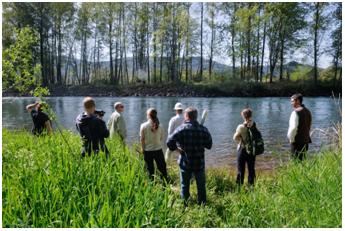Partner Interview: Mark Fancey
Community Development Director
City of Monmouth
What Community Service Center program(s) did you work with?
Community Planning Workshop (CPW)
Briefly describe the project(s) you work on with the CSC
We contracted with CPW in 2008 to lead the update for our parks master plan. CPW completed the project and the city adopted it in 2008.
Why did you decide to work with the Community Service Center (CSC)?
One part was my background coming from the program, I pursued a masters in planning at the University of Oregon as a student. Part two was that we needed improvements on our parks master plan. I found them to be an affordable option and recently became aware of their choice to add park master plans to their repertoire of available services.
What were the benefits of engaging the CSC program?
The CSC is affordable and professional. I felt the project would also work well for students looking for opportunities for experiences that I received during that time. The CSC is great for resume′ building for someone directly out of college.
What role did CSC staff/students/members have in the project?
They organized meetings with city staff and the parks board, provided new information for the process, and coordinated public outreach, and wrote the Master Plan.
How did the engagement of the CSC program(s) increase your organization capacity to complete the project?
I felt the CSC was an extension of city staff; my one man department would not have capacity to complete the project without them.
What advice do you have to other potential community partners about working with the CSC?
I believe the CSC is a great untapped resource for students and the community. Communities in the area can take advantage of the student planners of tomorrow.
Call to Action / Plug Something:
In December 2008, the City Council adopted an updated Monmouth Parks Master Plan. The Master Plan outlines parks system improvements over the next 20 years. The updated Master Plan also includes concept plans for both Main Street Park and Madrona Park. See the Plan!
More about the Community Planning Workshop(CPW)




